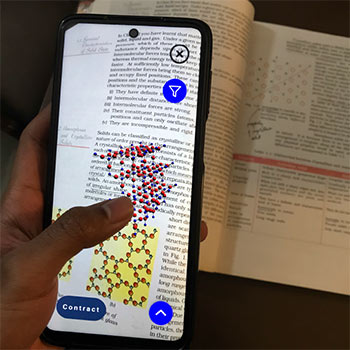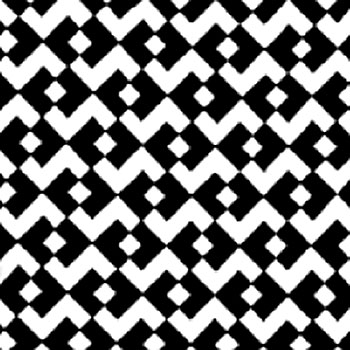Interaction Design
Batch 2017-2021
(3 items)
Interaction DesignBatch 2017-2021
(3 items)
(3 items)
Augmented Reality In Education
by Aaditya Aji
by Aaditya Aji
Formal education acts as stepping stones for creating a learning environment for students throughout the high school and college journey. During the COVID pandemic, the schools had to be closed down and students were stuck at home with their classes happening virtually through online video conferencing tools and virtual classrooms which naturally affected the learning environment for the students. In conventional classroom environment, the day would consist of several subjects as periods along with extra curricular activities(ECAs) to create a balance, along with competitions, events, workshops, practical laboratory classes etc. which created a good learning environment for students. With the sudden change in the formal education sector, students could not adapt to the new ways of instructional learning which severely affected the performance of the students. The learning environment that the traditional system created was missing from the virtual classroom approach. It was also interesting to note that the education sector was several hit because there wasn’t any significant change that had happened in the sector until recently with several online education platforms coming up in the form of open-source courseware or startups which tutor students. I thought it’d be interesting to explore the possibilities of new tech in the sector the way it has affected other growing sectors such as finance, health, etc. In my project, I’m using AR to aid students in 3D visualisations of concepts explained in class 12th NCERT textbook which could help them understand the concepts better along with other supportive material which will help them develop curiosity and interest in the topics while maintaining a seamless self-learning experience under the pandemic conditions which was earlier fulfilled by the formal education system through various activities and social learning environment in schools. The AR mobile app can be used to scan images in the NCERT textbook which opens a 3D visualisation that the students can interact with, and explore to understand the spatial features, which further allows them to question and gain interest in the area, nudging them to read and know more about the topic. The app also provides additional learning material from Wikipedia, which can be used to read up about the relevant related topics and relevant instructional videos which can help a student understand concepts through instructional means which was missing due to problems faced in the virtual classroom environment, earlier students would interact with teachers and students in classrooms when they faced issues or doubts. This blended learning approach has proven to be more engaging for students and hence this opportunity could be used to develop a framework that can be used to create or curate more educational content. Exploring that possibility and suggesting a solution in the direction was my primary motive of the project.
Details >>Automation in polyhouse
by Pranav Pagar
by Pranav Pagar
Polyhouse is a structure made of translucent material like polyethene, where the plants grow under well-controlled climatic and ideal conditions. Polyhouse is mainly used where the environment for some plants is not ideal. The size of the structure can differ from small house to big-size buildings as per the need. The high-end polyhouses have installed advanced technology like heating and cooling systems, lighting, monitoring screens, and computerized system which provide the ideal conditions for plants. People tending towards polyhouse cultivation is due to more profits and the possibility to grow crops throughout the year without depending on environmental factors.
Details >>Form, Transition and Abstraction
by Jake V. Abraham
by Jake V. Abraham
The purpose of this project is to create an easy-to-grasp video lecture on the topic “Form, Transition, and Abstraction.” The initial intention was to cover a much bigger portion of form, a principle of two-dimensional design. But, to cover the vast knowledge about form requires a considerably longer time and resource than what is available for the project scope. So, the basics of three topics were selected from the available material and condensed into an easy-to-understand material and presented. The lecture explains the basics of form, transition, and abstraction through suitable examples. To test the understanding of the student, easy-to-complete exercises are also provided to
Details >>

